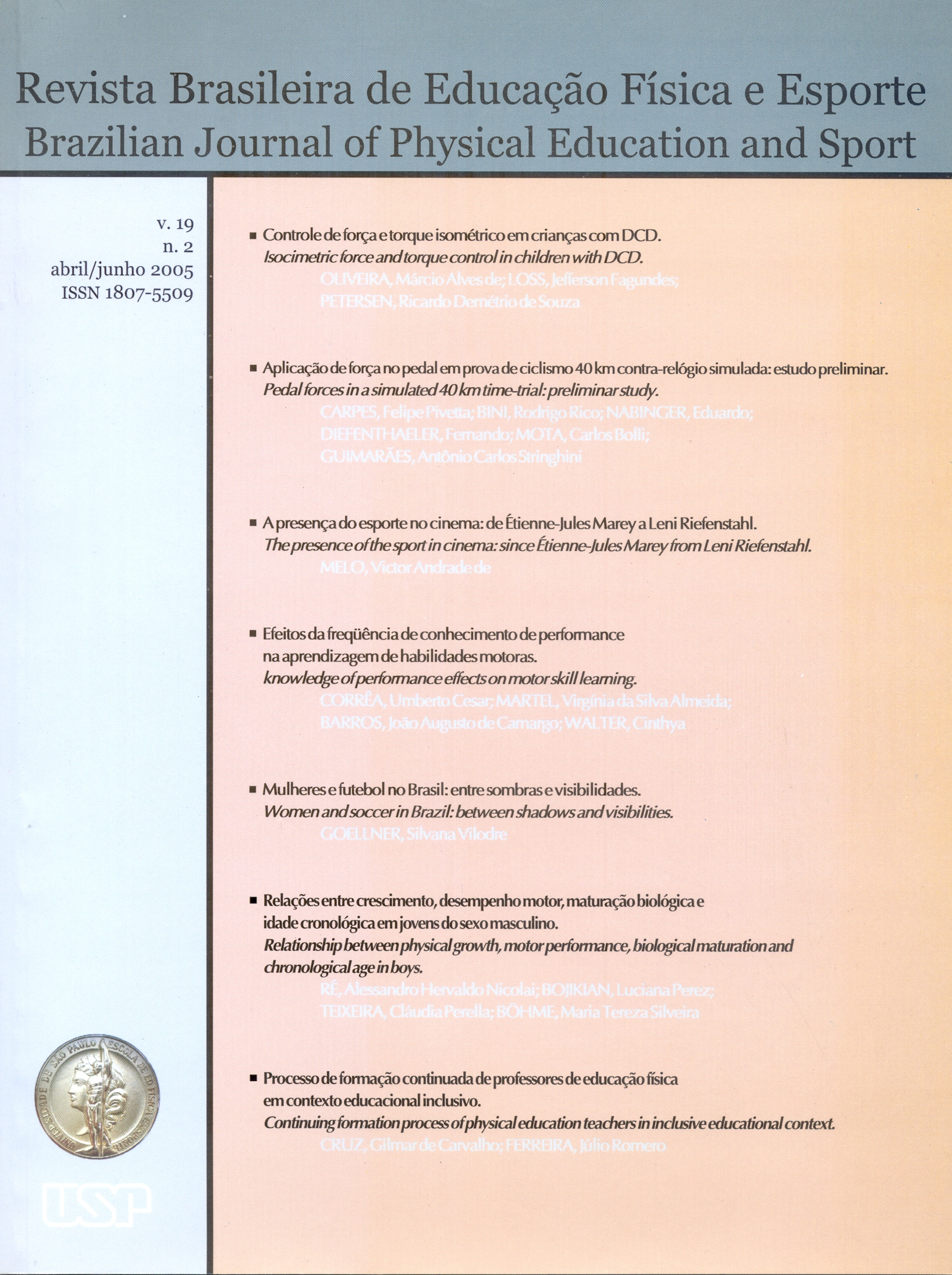Isometric force and torque control in children with DCD
DOI:
https://doi.org/10.1590/S1807-55092005000200001Keywords:
Force control, Variability, IrregurarityAbstract
This study examined the ability of DCD children to explore the dynamics of the motor sensory system in the time domain. The structure of the system output and the performance were analyzed in three different manipulative force regulation tasks (digital press, pinch press, and torque during pinch press). These three tasks were used to evaluate the output behavior related to different task constraints. Sixteen children with Movement ABC scores at or below the 5th percentile formed the DCD group with 9.0 (± 0.2 years) and sixteen typically developing children (above the 35th percentile) formed the second group with 9.6 (± 0.3 years). An oscilloscope provided visual feedback during the task and the child.s applied force was represented by a horizontal line that matched a reference line at 40% of the maximum isometric force. Children with DCD showed difficulties in exploring the output dimensionality of the motor sensory system. More variability and less irregularity were identified in the force and torque control responses independently of the task constraints. The results are discussed in terms of the central mechanisms responsible for force regulation.Downloads
Download data is not yet available.
Downloads
Published
2005-06-01
Issue
Section
naodefinida
License
Todo o conteúdo da revista, exceto onde está identificado, está licenciado sob uma Licença Creative Commons (CC-BY)
How to Cite
Oliveira, M. A. de, Loss, J. F., & Petersen, R. D. de S. (2005). Isometric force and torque control in children with DCD . Brazilian Journal of Physical Education and Sport, 19(2), 89-103. https://doi.org/10.1590/S1807-55092005000200001


